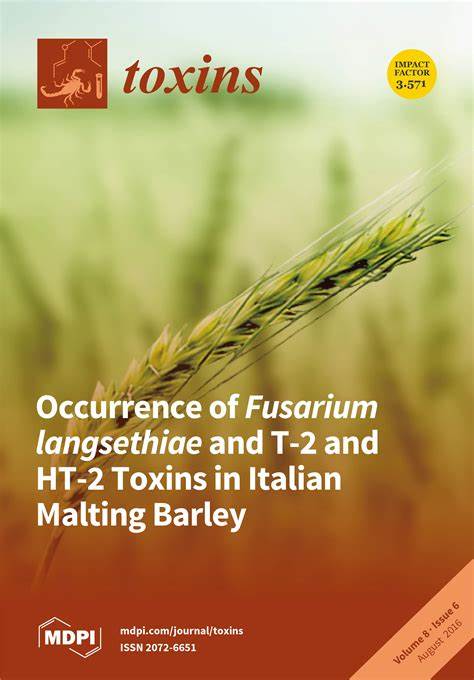霉菌毒素 T-2 和脱氧雪腐镰刀菌烯醇促进猪链球菌在猪回肠类器官单层上的转运
IF 3.9
3区 医学
Q2 FOOD SCIENCE & TECHNOLOGY
引用次数: 0
摘要
由于霉菌毒素会影响上皮细胞的完整性和功能,因此有可能增加气道或肠道感染的风险。猪体内经常携带猪链球菌(S. suis),这种细菌可引起侵袭性疾病的爆发,导致断奶后仔猪患败血症和脑膜炎。在这项研究中,我们测试了两种镰刀菌霉菌毒素(脱氧雪腐镰刀菌烯醇(DON)和 T-2)对肠道上皮细胞完整性的影响及其与猪痢疾杆菌的相互作用。猪回肠器官组织单独或混合接触 DON 和 T-2,并与猪痢疾杆菌或不与猪痢疾杆菌共培养。浓度为 1 µM 的 DON 和 T-2 对回肠类器官单体均有毒性,但对猪嗜血杆菌无毒性,即使浓度为 4 µM 时也是如此。为了模拟农场中的亚临床接触,DON的测试浓度为0.1微摩尔,T-2的测试浓度为0.01微摩尔。单独使用霉菌毒素不会影响细胞的通透性,但与鼠疫杆菌混合使用时,上皮细胞的通透性会增加。此外,DON和T-2一起会降低上皮细胞的跨膜电阻,增加细菌的转运。本文章由计算机程序翻译,如有差异,请以英文原文为准。
The Mycotoxins T-2 and Deoxynivalenol Facilitate the Translocation of Streptococcus suis across Porcine Ileal Organoid Monolayers
Mycotoxins have the potential to increase the risk of airway or intestinal infection due to their effects on epithelial integrity and function. The bacterium Streptococcus suis (S. suis) is often carried in pigs and can cause outbreaks of invasive disease, leading to sepsis and meningitis in postweaning piglets. In this study, we tested the effect of two Fusarium mycotoxins (deoxynivalenol (DON) and T-2) on the integrity of the intestinal epithelium and their interaction with S. suis. Porcine ileal organoids were exposed to DON and T-2 individually or in combination and co-cultured with or without S. suis. Both DON and T-2 were toxic for ileal organoid monolayers at a concentration of 1 µM but not S. suis, even at a higher concentration of 4 µM. To mimic sub-clinical exposures on farms, DON was tested at a concentration of 0.1 µM and T-2 at a concentration of 0.01 µM. The mycotoxins alone did not affect cell permeability, but in combination with S. suis there was an increase in epithelial permeability. Furthermore, DON and T-2 together decreased the transepithelial electrical resistance and increased bacterial translocation.
求助全文
通过发布文献求助,成功后即可免费获取论文全文。
去求助
来源期刊

Toxins
TOXICOLOGY-
CiteScore
7.50
自引率
16.70%
发文量
765
审稿时长
16.24 days
期刊介绍:
Toxins (ISSN 2072-6651) is an international, peer-reviewed open access journal which provides an advanced forum for studies related to toxins and toxinology. It publishes reviews, regular research papers and short communications. Our aim is to encourage scientists to publish their experimental and theoretical results in as much detail as possible. There is no restriction on the length of the papers. The full experimental details must be provided so that the results can be reproduced.
 求助内容:
求助内容: 应助结果提醒方式:
应助结果提醒方式:


